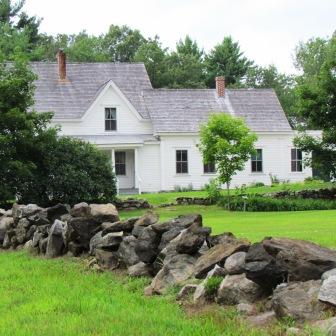
Adverse possession laws allow a person whose name is not on the deed to property to actually acquire legal title by meeting certain conditions.
Adverse Possession Requirements
The adverse possessor must openly, continuously, exclusively, adversely and notoriously use the land for a period of time which varies from state to state. Then, they own it. Under this ancient but still valid law, the adverse possessor’s use of the land must be obvious and open, such that the true owner would be on notice. And if, during the statutory period of time required to ripen this claim the true owner takes action to stop the adverse possessor, then the clock starts to run again.
Typical cases involve fences or other border markings that are put in the wrong place, and the property owner whose rights are violated does nothing for the period of time set out in that state’s law. They lose their land.
Adverse Possession Example – Actual Case
Consider the case of Joseph & Pam. The couple buys a nice suburban house with a yard. A stone wall runs along the boundary line. At least, it looked that way. The wall really wasn’t on the legal line. The true survey line indicated Joe & Pam owned another 871 square feet outside the wall.
Unhappy with the discovery, Joe tore down the wall, claiming the additional triangle of land in his deed. Neighbor Dave was furious. Dave and the previous owners had mowed the lawn and planted a garden all the way over to the stone wall, believing it to be the boundary line as long as anyone could remember, well over 20 years. Enter the legal theory of adverse possession.
Adverse possessors must prove they used the land openly, continuously, exclusively, adversely and with notice to the legal owner for 20 years. The adverse aspect amounts to a trespass against the true owner. It doesn’t matter if the folks claiming adverse possession only recently purchased. They can tack on the adverse use of those who owned the property before them.
Someone mistakenly built the wall inside Joe’s property line decades earlier, cheating owners of the lot out of 871 square feet. The mistake was the twist in this case. At first, the trial court held that Joe shouldn’t lose the land because there could be no notice or adversity to the people who sold the lot where there was a mistaken belief over where the true line was. But that ruling was appealed.
The appellate court found that it makes no difference that the parties were mistaken. Subjective personal beliefs make no difference and did not in any way stop the adversely possessed parties’ ability to gain notice of the wrongful possession.
In Mastroianni v. Wercinski, decided in February, 2009, the New Hampshire Supreme Court held that where a non-owner of land shows signs of using the land under the mistaken belief that they are holding up to the true legal line, they actually gain legal ownership up to that line, regardless of the mistake. This NH case represents the law in a majority of states.
Other cases all over the country involve mistakenly built wooden fences, driveways, and a Massachusetts case where a railroad spike marked a disputed boundary.
The required adverse possession ripening period in MA and NH is 20 years. Different states vary this requirement.
Fences and Stone Walls
Robert Frost wrote that “good fences make good neighbors.” But, in this case a decades old stone wall generated ill will and a court ordered relocation of the boundary line under centuries old adverse possession laws.
Footnote: Adverse possession is property law not personal injury. Why is it posted here? In one contentious adverse possession case I handled through trial one of the few things opposing counsel and I agreed upon was that property ownership and boundary disputes become very personal.
Views: 24





Why does the law have to be so complicated why not just follow the boundary line?
I’ve had cases in which that was exactly my argument. Sometimes the issue in rural areas is that the lines were never clear. The best way to start is to retain a licensed surveyor. Also at the very start find witnesses and retain a professional to document statements before witnesses disappear and or forget. It happens.
It’s hard to figure out why anyone would try to take away land contrary to clear indications on a deed. People are crazy. Adverse possession sounds like an ancient law that should go away like horses and buggies. How could a court take adverse possession seriously if deeds and surveys say otherwise?
I own property in Antrim, NH and have a stone wall property line that separated my property from the neighbors. The neighboring property was recently sold. They had to put in a septic system and in doing so encroached my property as well as destroyed the stone wall wall and removed trees that were along my property line. I am baffled and devastated. I would like some advice please.
This raises many issues beyond a blog post and quick answer. Did they give you any sort of notice? Are they claiming adverse possession? Do they claim permissive use? Did either party have the land surveyed? How much of the wall was damaged? Do they have any intention of repairing the wall? On which side of the wall were the trees rooted? You may have a significant claim for damages. Damage to a stone wall, long there, marking a boundary potentially exposes them to civil and/or criminal penalties. Feel free to call my office to set up an appointment. I wish you the best.